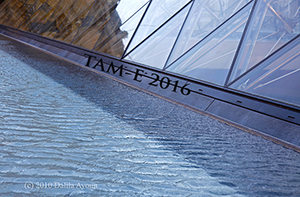I will argue that new future resultative constructions based on past tense forms are now emerging in Hebrew and discuss two research questions:
- How do these constructions differ from Hebrew's future tense and imperative mood?
- What are the motivations for the seemingly counter-intuitive choice of past tense forms?
The Future Resultative Construction employs past tense forms to denote a future state ensuing from a previous action. xasaxta (lit. ‘you saved') in (1) conveys the future state of having saved 300 shekels (due to a future purchase). By contrast, Hebrew's future tense (2) bears no such resultative reading:
(1) ha-mexir ecle-nu: 900. xasaxta: 300 (Mobile Website)
DEF-price at-1.PL 900 save.PST.2.SG.M 300
‘Our price: 900. Your saving will be: 300'
(2) nipagesh maxar
meet.FUT.1.PL tomorrow
‘We'll meet tomorrow'
The Military Imperative Construction consists of second person past tense forms and a temporal upper-bound. It requires that the addressee shall be in a future state of having executed the command (3). By contrast, Hebrew's imperative mood (4) merely asserts the command:
(3) daka hikaftem ta-ma'ahal!
minute encircle.PST.2.PL.M ACC.DEF-camp
‘Be in a state of having run around (lit. you ran around) the camp in a minute!'
(4) takifu ta-ma'ahal!
encircle.IMPERATIVE.2.PL ACC.DEF-camp
‘Run around the camp!'
I argue that the use of past tense forms is motivated: the future state is the point of reference R from which the event E is viewed (Reichenbach 1947). E is a relative past of R in a Perfect's formulation E-R. De Swart schematizes resultatives as an eventuality e immediately followed by a state s. (2007: 2278). Thus, the past tense forms in the above constructions reflect the anteriority of e to s iconically.
- Autre

 PDF version
PDF version
